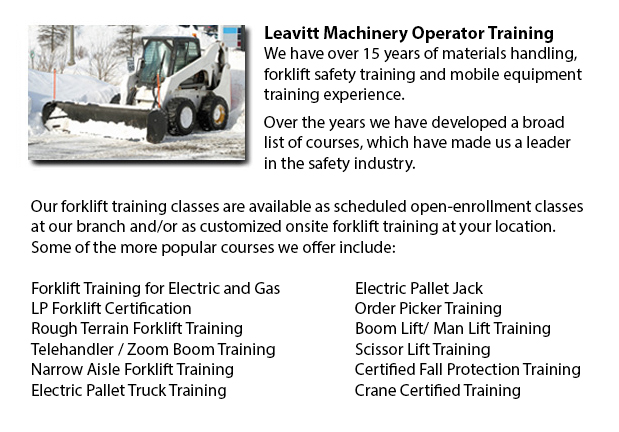
Skid Steer Ticket Kamloops - The lift arms on the skid-steer loader are located at the side of the driver with pivots at the rear of the driver's shoulders. These features makes the skid-steer loader different compared to the conventional front loader. Due to the operator's proximity to moving booms, early skid loaders were not as safe as conventional front loaders, particularly in the operator's exit and entry. Today's' modern skid-steer loaders have many features to protect the driver like for instance fully-enclosed cabs. Similar to other front loaders, the skid-steer model could push materials from one place to another, could load material into a truck or trailer and could carry material in its bucket.
Operation
There are lots of times where the skid-steer loader can be utilized instead of a big excavator on the job location for digging holes from the inside. To begin, the loader digs a ramp to be used to excavate the material out of the hole. As the excavation deepens, the machinery reshapes the ramp making it steeper and longer. This is a very helpful technique for digging beneath a structure where there is not sufficient overhead clearance for the boom of a big excavator. For example, this is a common scenario when digging a basement below an existing building or house.
The skid-steer loader accessories add much flexibility to the equipment. Like for instance, conventional buckets on the loaders can be replaced attachments powered by their hydraulics including backhoes, tree spades, sweepers, mowers, snow blades, cement mixers and pallet forks. Various other popular specialized attachments and buckets comprise wheel saws, snow blades, trenchers, angle booms, dumping hopper, wood chipper machines, grapples, tillers and stump grinders rippers.
History
In the year 1957, the very first front-end, 3-wheeled loader was invented in Rothsay, in the state of Minnesota by brothers Cyril and Louis Keller. The brothers invented the loader to be able to help a farmer mechanize the method of cleaning turkey manure from his barn. This machinery was compact and light and included a back caster wheel that allowed it to maneuver and turn around within its own length, enabling it to carry out similar jobs as a traditional front-end loader.
During 1958, the Melroe brothers of Melroe Manufacturing Company in Gwinner, N.D. purchased the rights to the Keller loader. They hired the Keller brothers to continue refining their loader invention. The M-200 Melroe was the result of this partnership. This particular model was a self-propelled loader that was launched to the market in the year 1958. The M-200 Melroe featured a two independent front drive wheels, a rear caster wheel, a 12.9 HP engine and a 750 lb lift capacity. By nineteen sixty, they changed the caster wheel with a rear axle and introduced the first 4 wheel skid steer loader that was referred to as the M-400.
The M-400 immediately became the Melroe Bobcat. Normally the term "Bobcat" is used as a generic term for skid-steer loaders. The M-440 was powered by a 15.5 HP engine and had 1100 lb rated operating capacity. The business continued the skid-steer development into the middle part of the 1960s and launched the M600 loader.
-
Forklift Training Course Kamloops
Forklift Training Course Kamloops - CSA and OSHA establish criteria for forklift safety training that meets current standards and regulations. Anybody planning to use a forklift is needed to successfully complete safety training prior to utilizing an... More -
Forklift Training Program Kamloops
Forklift Training Program Kamloops - The forklift is a common powered industrial vehicle which is in wide use these days. They are occasionally called lift trucks, jitneys or hi los. A departments store will use the forklift in order to unload and lo... More -
Aerial Lift Training Kamloops
Aerial Lift Training Kamloops - The mechanized access platform known as an aerial work platform is a machinery which provides access to places that are otherwise inaccessible to people and other machine. Likewise called an elevating work platform or... More -
Forklift Training School Kamloops
Forklift Training School Kamloops - Forklift Training School - CSA and OSHA establish criteria for forklift safety training which meets existing standards and regulations. Anybody planning to use a forklift is needed to successfully complete safety t... More -
Heavy Equipment Training Courses Kamloops
Heavy Equipment Training Courses Kamloops - When choosing a heavy equipment operator course, the initial step must be to determine the capacity in which you would be working with heavy machines. You could find the correct course to teach you how to o... More -
Heavy Equipment Training School Kamloops
Heavy Equipment Training School Kamloops - HEO or also known as the heavy equipment operator courses would provide you with the skills and knowledge required in order to enter the workforce as an entry level heavy machine operator. In this 12 week co... More -
Telehandler Operator Training Kamloops
Telehandler Operator Training Kamloops - Telescopic handler Forklifts or telehandler forklifts are common industrial equipment found in numerous construction industry environment. The telehandler is a helpful machinery and makes for a valuable tool w... More -
Telehandler License Kamloops
Telehandler License Kamloops - A telehandler or telescopic handler is a machine which is frequently utilized in agricultural and industrial applications. It has a similar appearance to a forklift and even works in a similar manner, though, the teleha... More

Forklift Training Kamloops
TOLL FREE: 1-888-254-6157
Kamloops, British Columbia
forklifttrainingkamloops.com
Email Us
About Us


